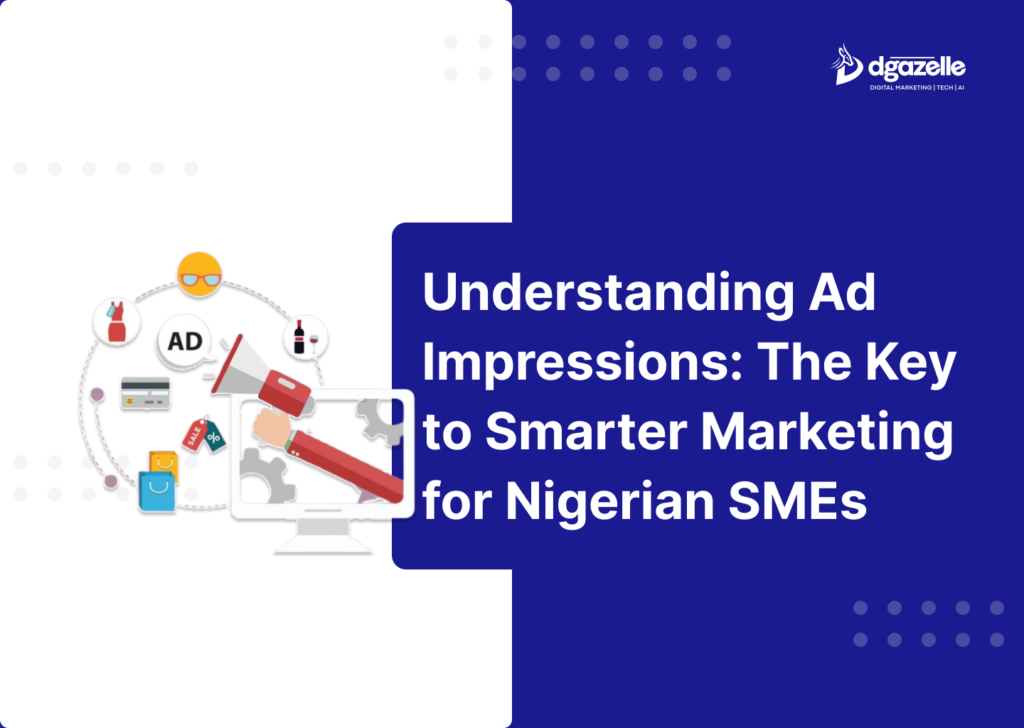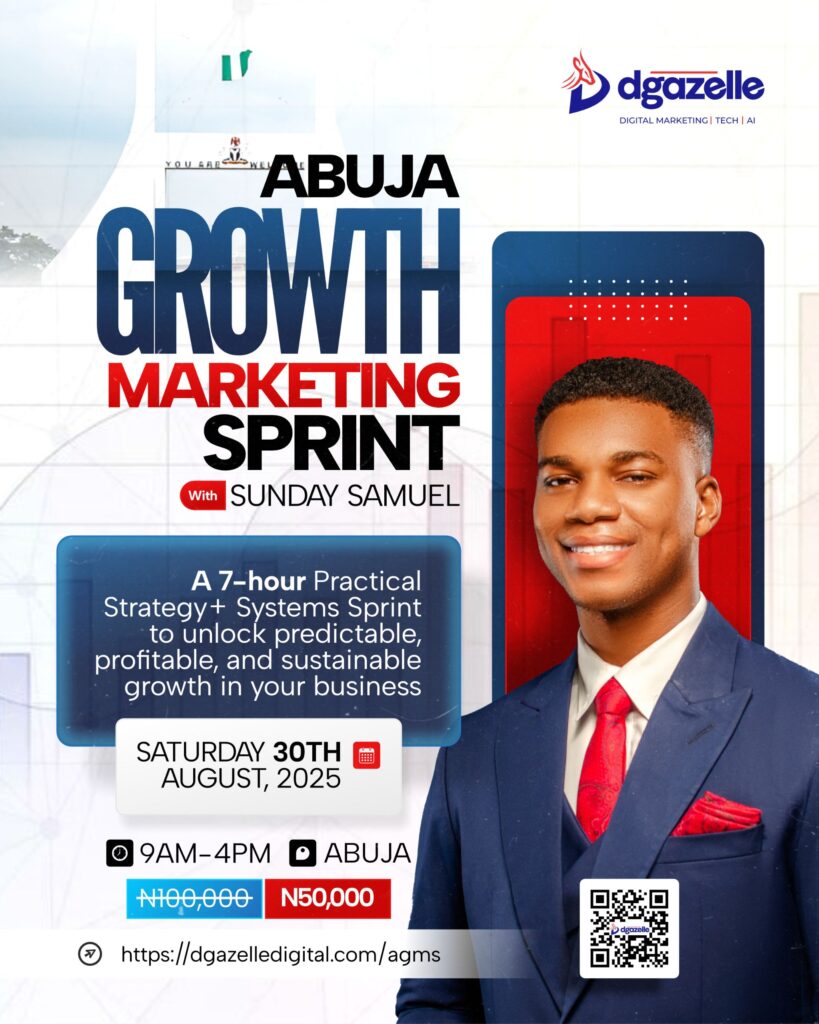Ad impressions are more than just numbers—they’re a critical measure of how far your brand message is reaching. But as a Nigerian SME owner, how do you ensure these impressions translate into actual business growth?
Simply put, an ad impression is counted every time your ad appears on a website, social media feed, or mobile app. It tells you how often your ad is displayed, but here’s the catch: visibility doesn’t always mean engagement or conversions.
However, seeing an ad doesn’t always mean a potential customer notices or interacts with it. So, how can you make ad impressions work for your Nigerian business? Stick with me—I’ll break it down and show you how to use this data effectively to drive real marketing results.
Understanding Ad Impressions: The Visibility Metric That Drives Awareness
An impression, also called an ad view, measures how often an advertisement is displayed. But not all impressions are created equal—understanding the difference between Served Impressions and Viewable Impressions is crucial for Nigerian business owners looking to maximize their digital marketing impact.
Understanding impressions is important, if you are looking to improve ad performance. Different types of impressions give you insights into reach, engagement, and effectiveness.
1. Served Impressions – Ads Delivered, But Not Always Seen
A served impression counts every time an ad appears in a user’s browser. However, it doesn’t confirm if someone actually saw or engaged with it. Think of it like putting up a billboard in a low-traffic area—it’s there, but how many people really notice it?
2. Verified Impressions – Ensuring Real Views
A verified impression confirms whether an ad reached a real person instead of bots or fraudulent traffic. This is especially useful in Nigeria’s growing digital ad space, where ad fraud can drain marketing budgets.
3. Viewable Impressions – Ads That Get Noticed
Defined by the Interactive Advertising Bureau (IAB), a viewable impression happens when at least 50% of an ad is visible on a user’s screen. Unlike served impressions, this metric ensures your ads have a higher chance of making an impact.
4. Clickable Impressions – Measuring Interest
A clickable impression tracks how often users click on your ad, offering a direct measure of interest. If you’re running ads for your business in Nigeria, this helps you gauge which campaigns drive traffic and potential leads.
5. Engagement Impressions – Beyond Clicks
This type of impression measures user interaction beyond clicks. If someone expands, hovers, or interacts with your campaign, it gets counted. For SMEs, this insight helps fine-tune campaigns to understand what resonates most with the audience.
Clarifying Ad Impressions vs. Ad Clicks: What Really Drives Engagement?
It’s easy to assume that a high number of impressions means your campaign is working—but impressions alone don’t guarantee engagement or conversions. To get real results, you have to understand the difference between impressions, clicks, and reach.
Ad Impression vs. Clicks vs. Reach
- Impressions track how many times your ad is displayed—whether or not users notice or engage with it.
- Clicks measure how many times people interact with your ad, signaling genuine interest in your offer.
- Reach represents the number of unique users who have seen your ad, helping you understand the actual size of your audience.
At Dgazelle, we help Nigerian businesses go beyond impressions—ensuring that every ad serves a purpose and reaches the right audience for real results.
How Ad Impressions Work
For business owners running digital ads, understanding how ad impressions work is key to maximizing visibility and conversions.
- Tracking Impressions: Every time an ad appears on a website or mobile app, it counts as an impression. Tracking these impressions helps business owners measure ad reach and visibility. However, not all impressions lead to engagement, so deeper analysis is needed.
- The Role of Ad Serving: Ad serving uses ad servers to deliver ads to users. This technology allows businesses to: manage ads across platforms, Track performance in real time, and Optimize delivery to the right audience at the right time.
- Tracking Technologies for Smarter Advertising: To measure ad effectiveness, businesses can use tracking tools such as: Pixels, Tags and Cookies.
How to Optimize Ad Impressions for Better Results
Getting a high number of impressions is beneficial, but if those impressions are not translating into engagement or conversions, your campaign may not be as effective as it could be. Optimizing impressions involves refining strategies to ensure your campaign reach the right audience, appear in the best placements, and encourage interactions. Here’s how you can improve the effectiveness of your ad impressions:
1. Target the Right Keywords
Using relevant keywords in your campaigns ensures your ads appear to users who are actively searching for products or services like yours. This increases the likelihood of engagement rather than just passive exposure. Choosing the right keywords helps in:
- Attracting potential customers who are genuinely interested in your offering.
- Reducing wasted ad spend on impressions that are unlikely to convert.
To find high-performing keywords, use research tools like Google Keyword Planner, Ubersuggest, or SEMrush. These tools provide insights into search volume, competition, and keyword variations that can enhance your targeting strategy.
2. Create Engaging and Clear Ad Copy
For display and banner ads, space is limited, so your messaging must be clear and compelling. A well-crafted ad should:
- Clearly highlight the value proposition to capture attention quickly.
- Use high-quality visuals and design elements that align with your brand.
- Include a strong call to action (CTA) such as “Shop Now,” “Get Started,” or “Claim Your Discount.”
Ads that fail to communicate their message in a few seconds tend to get ignored, even if they generate impressions. Testing different ad creatives and copy variations can help determine which versions resonate most with your audience.
3. Optimize Ad Placement and Bidding Strategy
Where your ads appear and how much you bid for placements significantly impact your impressions’ effectiveness. Consider these strategies:
- Bid strategically by adjusting your budget to prioritize high-performing placements and target audiences that are more likely to engage.
- Choose prime placements by displaying ads in locations where your target audience is most active, such as specific websites, social media platforms, or mobile apps.
- Use A/B testing to compare different placements and optimize based on performance data.
Strategic bidding and placement adjustments can improve the chances of your ads being seen by the right audience rather than just generating empty impressions.
4. Track and Analyze Ad Performance
Regularly monitoring campaign and its metrics is essential to determine their impact. Platforms like Google Ads Manager and Facebook Ads Manager provide detailed reports on:
- Impressions and reach to assess visibility.
- Click-through rates (CTR) to measure engagement.
- Conversion rates to evaluate overall effectiveness.
Using these insights, you can identify trends and make necessary adjustments. For example, if an ad is getting many impressions but few clicks, the issue may lie in the ad copy, design, or targeting.
Additionally, tools like Google Ads Grader can provide a performance breakdown, highlighting areas where you can improve cost efficiency, ad placement, and engagement strategies.
Conclusion
Impressions are a vital metric for measuring ad visibility, but their true value lies in how well they contribute to engagement and conversions. Simply generating high impressions without targeting the right audience or optimizing ad performance can result in wasted ad spend.
To maximize the impact of your impressions, focus on strategic keyword targeting, compelling ad copy, optimized ad placements, and continuous performance tracking. By refining these elements, you can ensure that your campaign are not only seen but also resonate with the right audience, ultimately driving better results for your campaign.
At Dgazelle, we don’t just focus on getting your ads seen—we ensure they get clicked and converted. With data-driven strategies tailored to SMEs, we help businesses like yours make every ad count.







